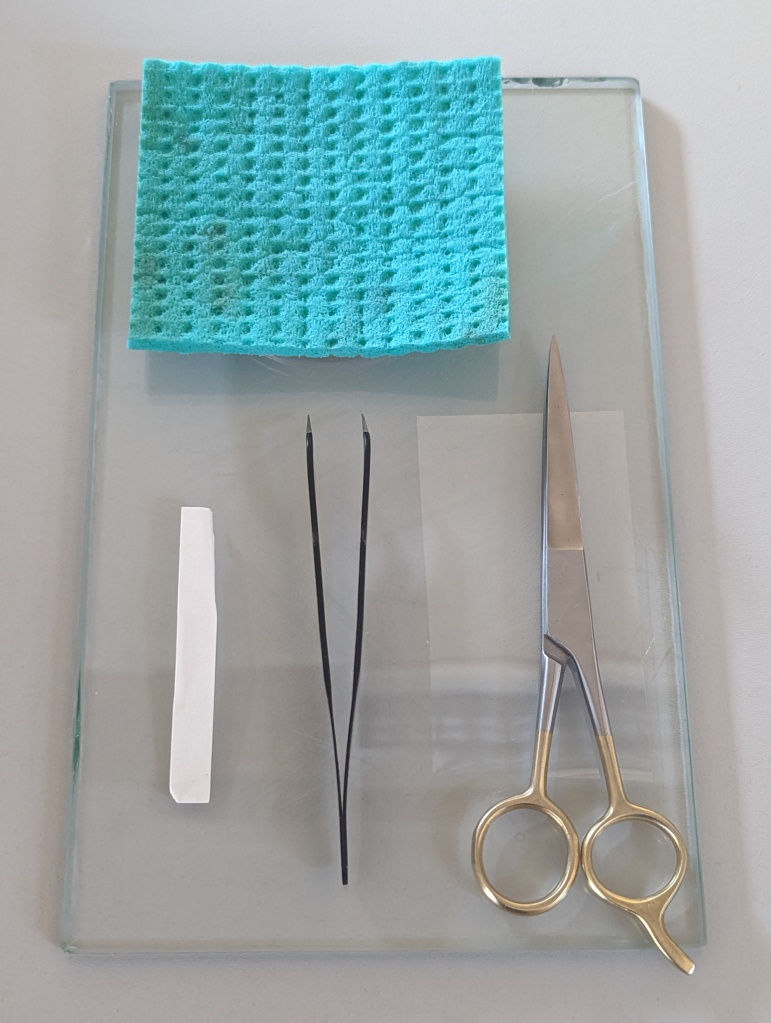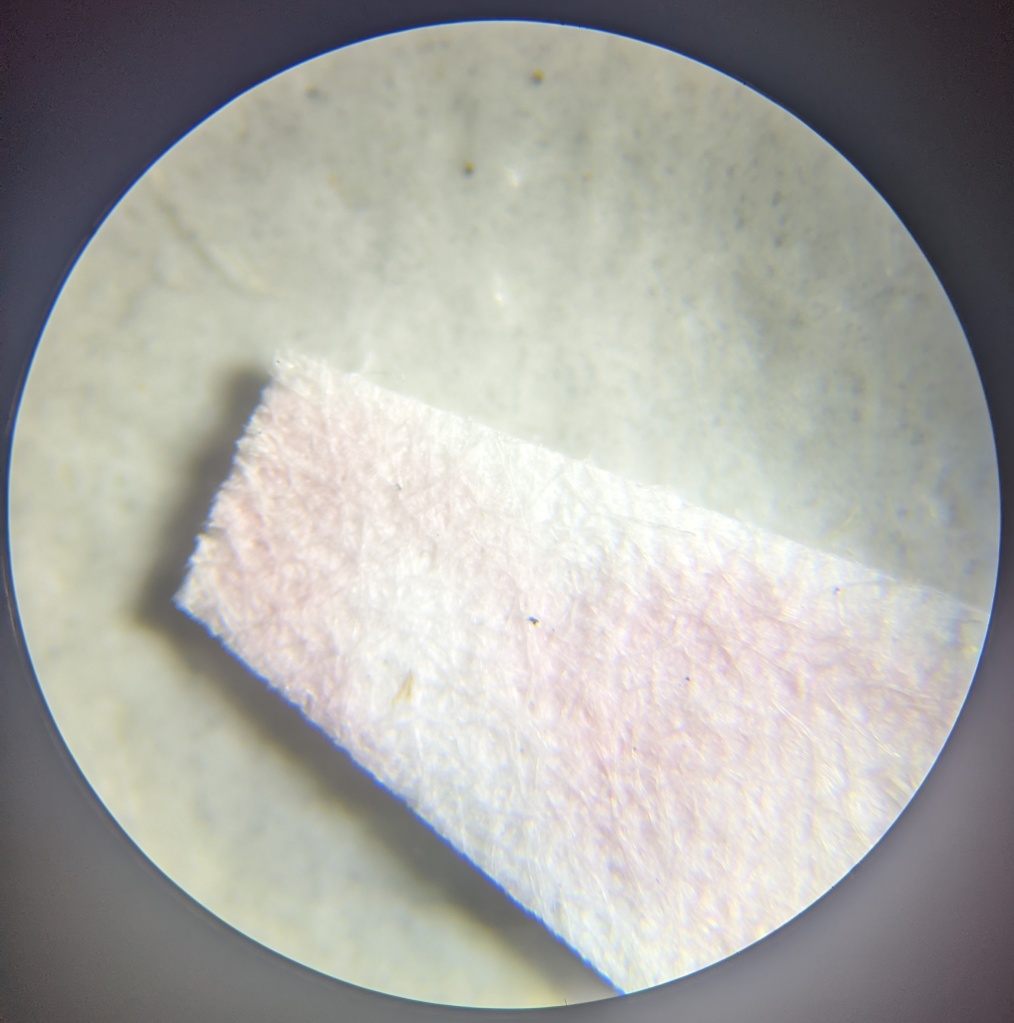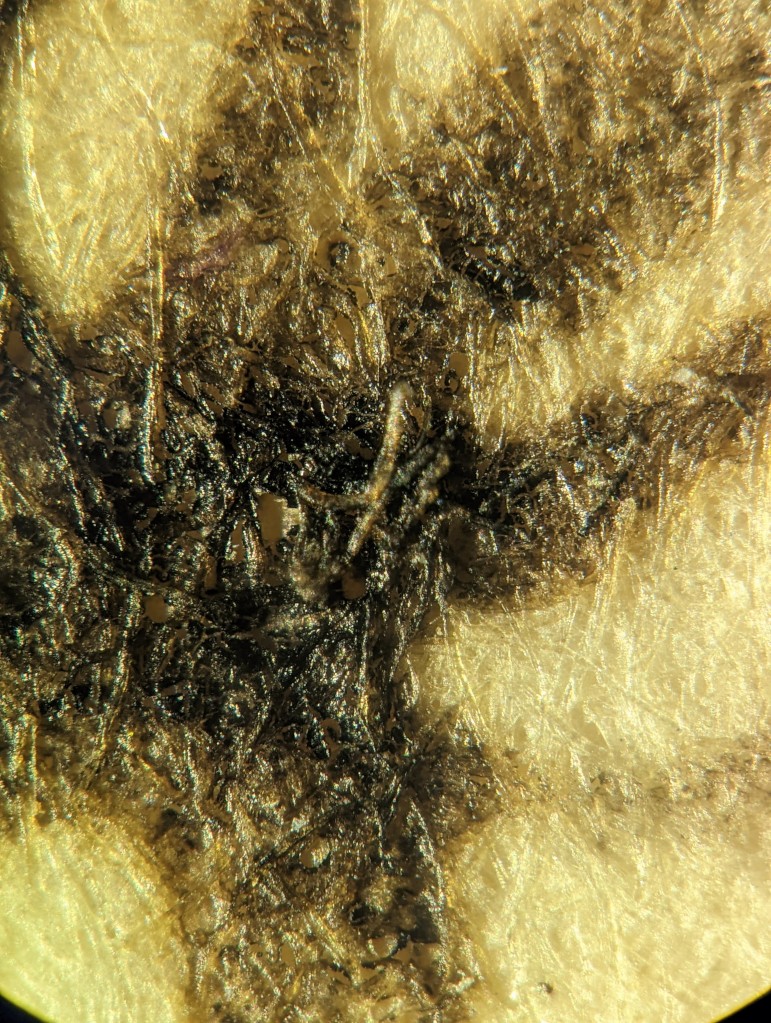By Clara Malinka
Popular in the Middle Ages for its permanence, iron gall ink has the potential to cause substrate damage, as any unbound ferrous ions cause paper degradation. Made using tannins from soaked tree galls, this ink is notorious for its distinctive visual characteristics and conservation dilemmas. Iron gall ink can be visually and analytically assessed, and its identification can impact conservation treatment decisions.
A handwritten logbook kept by Osbert Hambyn, a naval cadet and midshipman on the HMS Liverpool, presented a plethora of conservation issues, as the binding was unstable. The structure is a vellum stationery case binding over stiff boards, and it was used from 1865 to 1866. There was extensive water damage along the spine of the textblock, and the condition was poor. This water damage caused the intermolecular chemical bonds in the paper to come apart, giving a felt-like appearance (Fig. 1).

Notably, this document was handwritten over a period of time, meaning that the inks used throughout the text would have come from multiple sources. It is important to understand that multiple ink recipes are present throughout, resulting in multiple possibilities for harmful free iron ions to be located at different places in the textblock.
Accumulations of free iron ions can be deposited in the paper substrate via a variety of ways:
- Metal inclusions could have been a part of the paper production process. This can be seen in foxing spots.
- Uncontrolled applications of water containing iron ions can lead to an accumulation of iron salts around the tideline (Neevel, 2005, p. 28).
- Iron-containing media or pigments, like iron gall ink and Prussian blue.
- Exposure to external sources of iron, like metal furniture, staples, etc.
Iron exposure to paper substrates is damaging. In general, iron (II) ions are a direct threat to the paper substrate, while iron (III) ions can be viewed as potentially threatening, as under certain conditions they can change into iron (II) ions. Detection is key, and it is important to test if iron ion accumulation is suspected.
The analytical aim for this exercise was to determine whether the paper substrate had an accumulation of undesirable free iron (II) ions. There were two areas of concern for the conservation object: the handwritten ink and the tidelines. This left me with two questions:
- Is the handwritten ink detrimental to the paper substrate?
- Did the tidelines caused by water damage leave tiny iron particles in the paper substrate that may cause preservation issues later on?
Is there a way to safely identify iron gall ink?
Prior to any treatments to iron gall ink, it needs to be established that the ink actually has an excess of free iron ions and is damaging to the substrate. Visually assessing using a fluorescence microscope for any substrate corrosion is usually the first step when trying to identify iron gall ink, while an analytical method developed by J. Neevel allows for a noninvasive confirmation of free iron ions using filter paper containing bathophenanthroline (2005). This spot-testing method is my preferred method because of its simplicity, as well as the ease of detecting free iron ions in hydrophilic substrates.
Visual analysis
A microscope with 5x magnification provided a better view of potential areas of concern. Though a visual analysis was useful, an irrefutable confirmation of the presence of damaging unbound iron ions was still needed.
Indicator paper: the procedure
Prior to testing, I assembled the materials: the iron (II) indicator paper, a damp sponge, a pair of stainless steel scissors, stainless steel tweezers, a piece of polyester film and blotting paper.

The overall procedure is as follows.
- A piece of blotter was placed under the testing area.
- A small piece of the indicator paper was cut with stainless steel scissors and handled with stainless steel tweezers. Using tweezers is important, as oils from hands can prevent the indicator paper from functioning fully. The indicator paper was then dampened with the sponge.
- The indicator paper was placed on the testing site, covered with a piece of thin polyester film, and pressed with relatively low pressure for 30 seconds.
- It was then removed from the testing site and analysed.
This was carried out in areas of suspected iron gall ink corrosion, as well as in areas of water damage.


Fig. 4 – Iron gall ink test in progress.
Fig. 5 – Tideline test in progress.
Interpreting the results is rather simple. If iron (II) ions are present, the indicator paper will turn hot pink. Over the course of 5 minutes, the colour can continue to change and develop. It is important to note that the intensity of the pink colour is indicative of several things: the concentration of iron (II) ions, the dampness of the indicator paper, the duration of the contact and how much pressure was exerted. Therefore, this method of testing produces a qualitative result rather than a quantitative one.
Initially, the results of the iron gall ink test seemed to be negative. As I was setting up the microscope to have a closer look, one of the test papers turned pale magenta (Figure 6).


Fig. 6 – Results of iron gall ink testing, 3.5x magnification.
Fig. 7 – Results of tideline testing, 3.5x magnification.
The answers provided by this method of testing were a mix of positive and negative results. Areas with heavy applications of ink tested positive, while areas around the tidelines did not.
Understanding the methods of free iron ion detection can be useful in conservation efforts and can help establish treatment protocols. Due to the popularity of iron gall ink throughout history, it is common for conservators to come across a range of the deteriorative stages that the unbound ions can cause. Now that it is understood that the ink in this conservation object has potentially damaging free iron ions, the treatment proposals and any conservation decisions can be adjusted accordingly to reflect the object’s best interests.
All images courtesy of Clara Malinka.
Clara Malinka is a book and paper conservator who recently completed her MA in Conservation Studies from West Dean College in 2023. Since then, she has served as a Project Conservator at the Wellcome Collection and the National Conservation Service (NCS).
References
Neevel, H. and Reissland, B. (2005). Bathophenanthroline indicator paper: Development of a new test for iron ions. 6. 28–36.
Further reading
Neevel, J. G. (1995). Phytate: A potential conservation agent for the treatment of ink corrosion caused by irongall inks. 16, no. 3. 143–16. https://doi.org/10.1515/rest.1995.16.3.143
